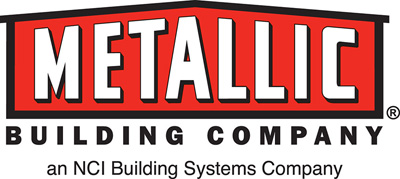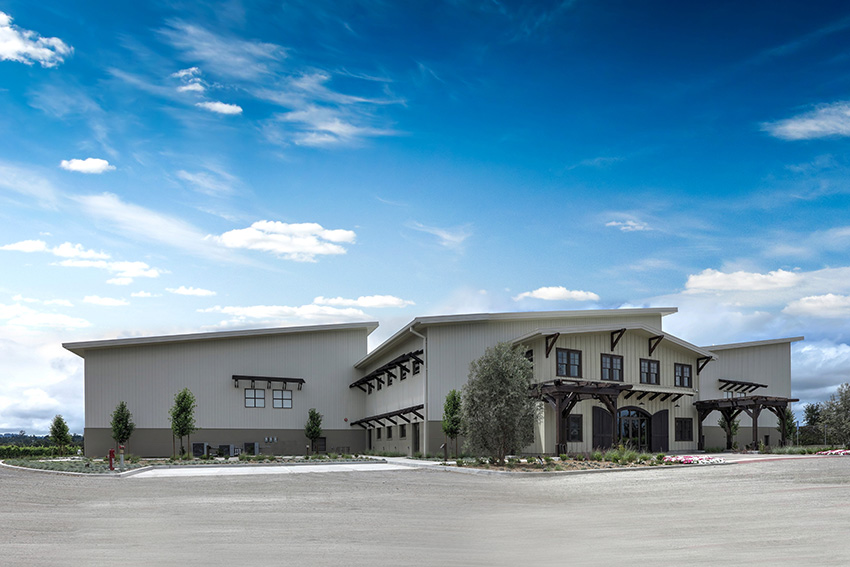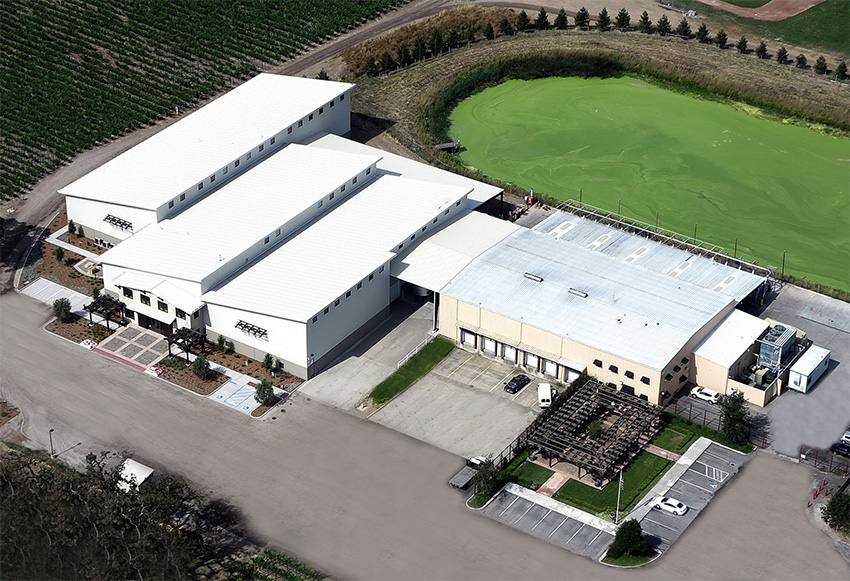Envelope-Based Solutions for Metal Buildings
Coordination of Envelope Systems and Building Design
An increasing percentage of roof assemblies now require insulation to be placed inside the purlin cavity as well as over the purlin. As a result, building manufacturers have to adjust their bracing systems to avoid interfering with the insulation system.
With a liner or filled cavity roof system, it is good practice to ensure the entire cavity is filled with insulation. For example, a common R-30 liner system consists of 6 inches of unfaced insulation in the purlin cavity and 3.5 inches over the purlins. With 8-inch-deep purlins and a standing seam roof, this will properly fill the cavity. However, if the building has 10-inch purlins, it will create an air gap where condensation can form. Increasing the amount of insulation in the cavity can help prevent this.
Manufacturers often offer windows, insulated doors and other accessories specifically designed for use in metal buildings. As the approach to energy performance becomes more holistic and comprehensive—and especially as the goal becomes net-zero energy—all elements will have to be considered in relation to each other. For instance, adding windows and/or skylights will come with an energy penalty, but they will enhance daylighting and potentially reduce the reliance on artificial lighting. Similarly, a roof will no longer be considered just for its impact on the building envelope but for its capacity to facilitate renewable energy. The size of a renewable energy system, in turn, will depend on overall energy demand and size of the HVAC system. Coordinating all of these elements will require more communication between the architect/engineer and builders, among manufacturers, and between manufacturers and clients.
Manufacturers who supply multiple envelope components and especially those who can leverage tools such as COMcheck to optimize assemblies will have the advantage.
References
- Energycodes.gov, BECU_Codes_101
- ©2016 ACEEE Summer Study on Energy Efficiency in Buildings
- Energycodes.gov, BECU_Codes_101
- Energycodes.gov, U.S. Department of Energy: 2015 IECC Commercial Scope and Envelope Requirements; https://www.energycodes.gov/sites/default/files/becu/2015_IECC_commercial_requirements_ envelope.pdf)
- Energycodes.gov,BECU_Codes_101
- Energycodes.gov,BECU_Codes_101
- Energycodes.gov,BECU_Codes_101
- ENERGY CODES AND STANDARDS by Martha G. VanGeem CTLGroup; Revised and updated by Ryan M. Colker; Sustainable Buildings Industry Council; Updated: 10-24-2016, from the Whole Building Design Guide, a program of the National Institute of Building Sciences.
- ENERGY CODES AND STANDARDS, by Martha G. VanGeem

|
Metallic Building Company manufactures custom-engineered metal buildings for numerous industries, including aviation, commercial, industrial, recreational, educational and agricultural. It serves these markets through a strong builder network as well as by working with architects to design a total envelope solution. www.metallic.com/ |










